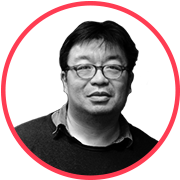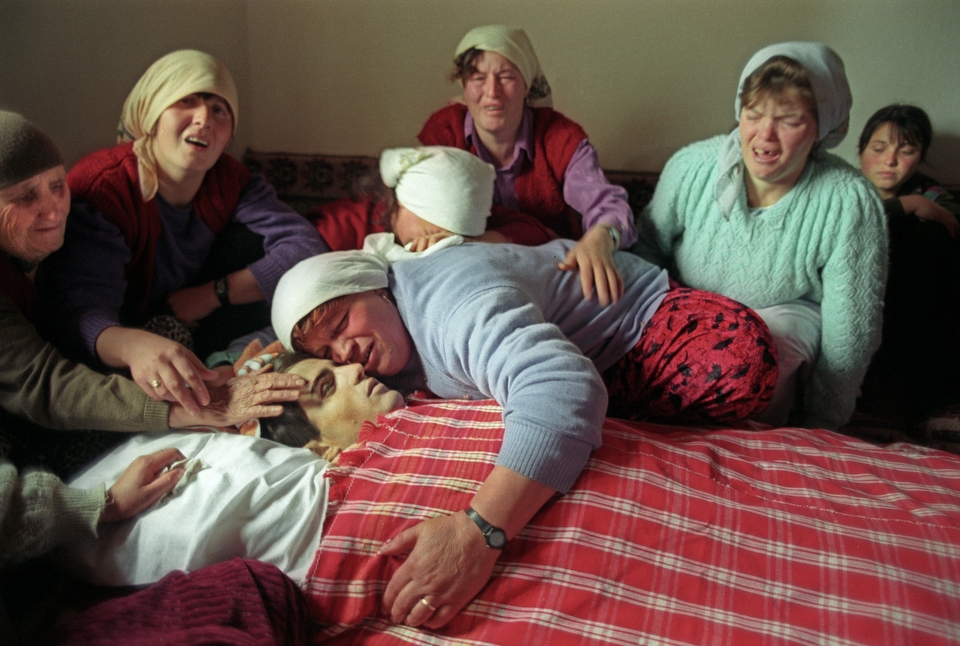Bird In Flight talked with American photojournalist Alan Chin in Kyiv. He shared insights about working in worst-case military conditions and discussed his personal project – a photography book about the Chinese province Tai Shan where his parents were born and spent their childhood. Bird In Flight selected interesting quotations from this meeting and connected them with his photographs.

Alan Chin, 43 years old
He was born and raised in New York City’s Chinatown. From 1996 he has worked in China, former Yugoslavia, Afghanistan, Iraq, Egypt, Tunisia and other countries covering military conflicts and natural disasters. Among his photo projects are works about the effects of Hurricane Katrina and the presidential election campaign in the USA, 2008. Chin’s photographs are published in
Newsweek,
The New York Times,
BagNews and other publications. He was nominated for the Pulitzer Prize twice – in 1999 and 2000 – for his works from Kosovo.
I have been a freelancer my whole career, and I was happy about it because I was a free. But now I would say, if you have an opportunity to get a job – take it.
{“img”: “/wp-content/uploads/2014/12/alan_07.jpg”, “alt”: “Dream chapter 07”, “text”: “September 3, 2005: Hurricane Katrina, New Orleans. 84-year old Milvertha Hendricks wrapped in an American flag blanket after spending five days on the street at the Convention Center. She was not evacuated until the next day.”}
As Americans say, “Steal land from Peter to give to Paul.” I shoot weddings, commercials or anything, and then I spend it to do my own documentary work. And sometimes I still live like a student.
{“img”: “/wp-content/uploads/2014/12/alan_08.jpg”, “alt”: “Dream chapter 08”, “text”: “Hurricane Katrina, New Orleans, 2005. The attempt to douse the blaze from a helicopter.”}
You always try to make that iconic picture because of all of the classical paintings and photographs you have seen in galleries and books. We can’t exist outside of our trainings and influences. But it is the aesthetic that is universal, it is an iconic image everyone in the world would understand.
{“img”: “/wp-content/uploads/2014/12/alan_02.jpg”, “alt”: “Dream chapter 01”, “text”: ” Afghanistan, 2001. 3000–4000 imprisoned Taliban members in an old jail that could only accommodate 800 people.”}
It is easy to make a picture when a lot of action going on or a situation is interesting by definition like a prison or Maidan. But then, as a photographer, you how to think how to make a visually interesting in situation of boring conferences or everyday life.
{“img”: “/wp-content/uploads/2014/12/alan_03.jpg”, “alt”: “Dream chapter 02”, “text”: “May 2005: American and Iraqi officers plan operations in the headquarters of an American brigade in Mahmudiyah south of Baghdad.”}
I would never be that guy who sticks his head out first in really dangerous situation, and would never go there alone. I have a lot of respect to my colleagues who are much braver than me.
{“img”: “/wp-content/uploads/2014/12/18-.jpg”, “alt”: “graphic picture” },
{“img”: “/wp-content/uploads/2014/12/alan_04.jpg”, “alt”: “Dream chapter 04”, “text”: “May 5, 2005: Remains of suicide bomber who killed 15 potential recruits awaiting entry to an Iraqi Army base, Baghdad, Iraq.”}
If people are fine with watching the fictional violence in Tarantino’s movies, they should be ready to look at real violence. Because when it comes to photographs, we suddenly start talking about ethics.
{“img”: “/wp-content/uploads/2014/12/alan_05.jpg”, “alt”: “Dream chapter 05”, “text”: “New York. Remains of WTC tower after the 9/11.”}
When you show graphic images, it’s very important to think how to present them and how they are going to be seen. If you make a print that big on the wall it’s different than the small one in a book, or in the newspaper, or online right away. The scale and time passed make the difference, about how intimately you relate to the picture.
{“img”: “/wp-content/uploads/2014/12/alan_06.jpg”, “alt”: “Dream chapter 06”, “text”: “New York. A story about 9/11 terrorist attack aftermath. “}
Of course, the memories of all these horrible events haunt you emotionally, but when I was younger I would say a joke – women, wine, and song.
{“img”: “/wp-content/uploads/2014/12/alan_09.jpg”, “alt”: “Dream chapter 09”, “text”: “China, 2008. Family members recover bodies of students killed when their school building collapsed during the Sichuan earthquake which killed 80,000 people.”}
Internet provides us with an infinite number of pages, so it gives space to go deeper in your reporting and photo narrative. But then it’s too much, you are competing with so many other sources, so it might get lost.
{“img”: “/wp-content/uploads/2014/12/alan_10.jpg”, “alt”: “Dream chapter 10”, “text”: “China, 2013. New Year’s fashion show of wedding dresses in Tay Shan.”}
When I look at the pictures from wars, sometimes I do not feel those are my pictures, it’s almost like looking at a history book. It will never happen to your personal work because no one else would ever do that story or take those pictures.
{“img”: “/wp-content/uploads/2014/12/alan_11.jpg”, “alt”: “Dream chapter 11”, “text”: “China, 2009. From the ‘Tay Shan’ series. “}
I love and hate citizen journalism at the same time. On one hand, we have more voices to be heard and seen, but on the other hand – can we really trust them? It’s a process of evolution – there were blogs that started 10 years ago and they survived – the facts were checked, we trust what is written there.
{“img”: “/wp-content/uploads/2014/12/alan_12.jpg”, “alt”: “Dream chapter 11”, “text”: “Indiana, USA, 2004. Re-enactor playing the German soldier shows Hitler’s suicide. “}






